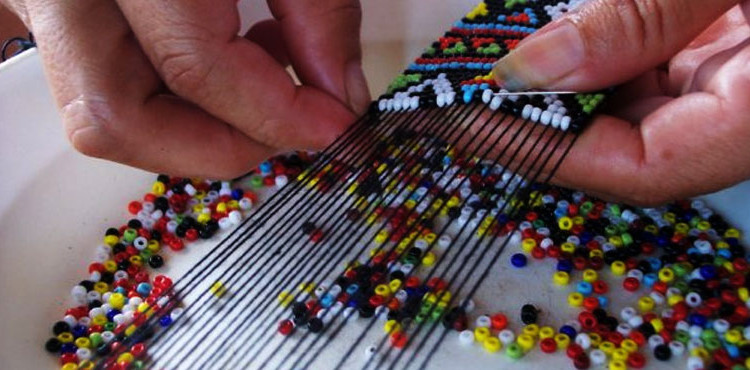Written by Reita Rahim of Gerai OA
The Lun Bawang are part of the Orang Ulu, the indigenous people of Sarawak. Inaccurately known (especially in older literature) as the Murut of Sarawak, they are upland dwellers residing mainly in the Limbang Division. They claim kinship with the Lun Dayeh of Sabah, and several other indigenous groups in Kalimantan (Indonesia) and Brunei.
Most are agrarians residing in the Lawas district in northern Sarawak: in and around Merapok, Long Semado, Ba’ Kelalan and Trusan – but urban migration is now common. There are no accurate population figures, and approximate though date figure is 15,000 (Sarawak statistics Dept 1980).
Despite increased development of their traditional lands, the Lun Bawang have managed to retain much older of their adat (culture, social mores and traditions) as well as their intangible heritage including their distinct languages, myth and stories, songs, dances and handicrafts.
Lun Bawang Handicrafts Today
The Lun Bawang still produce many utilitarian and agrarian crafts especially in the highlands surrounding Ba’Kelalan. Basketry is practiced by both men and women; these include rinuh winnowers and conical rong sunhats.
Beads are valued by the Lun Bawang and the scarcity of antique beads eventually led to the establishment of a small industry producing ceramic beads (bau) in Long Tuma near Lawas. This and other commercial crafts have been produced in villages surrounding Lawas since in the late 1980s, including crafts fashioned talun barkcloth (Artocarpus elasticus).
Other crafts, notably ritual crafts and several types of traditional musical instruments are now increasingly rare due to a lack of makers and buyers.
Long Tuma, Lawas
This small agrarian village of 250 inhibitants is a fifteen minute drive from the market town of Lawas; public transport is available. This village specialises in the production of hand-rolled and hand-painted bau ceramic beads (under the “one village one product” government project).
Contemporary Crafts
The following are some Lun Bawang crafts marketed by Gerai OA:
bau tanah clay beads
The pre-cursors of ceramic beads, these clay beads (fired but only coated with enamel paints) were made since the early 1990s using clay dug from the banks of the Pa’ Lawas river. These are strung to make reproductions of traditional beaded accessories such as pata beaded head-dress.
bau ceramic beads
These are also made using local river clay but the motifs (barit) are hand-painted using non-toxic underglazes then fired in electric kilns at 800 calcius. Barit mirror traditional favourites but now include new motifs and colours.
ol bau ceramic bead earrings
These are assembled from one or more pairs of bau ceramic beads. As the beads are hand-rolled and hand-painted, it is sometimes difficult to find exact corresponding pairs of beads to create these comtemporary earrings.
leku’ we’ rattan and fern fibre rings and bangles
Made from very thin strips of liputung fern fibres coiled around a we’ rattan base, these are made as thin bangles; large diameter leku’ are worn around a man’s calf. Very small versions are used as finger rings.
leku’ bunga patterned bangle
These broad bangles are also made by coiling strips of liputung fern fibres but on a much broader piece of rattan. Patterns are created by carefully interweaving strips of dark fern fibres with light coloured we’ rattan strips.





